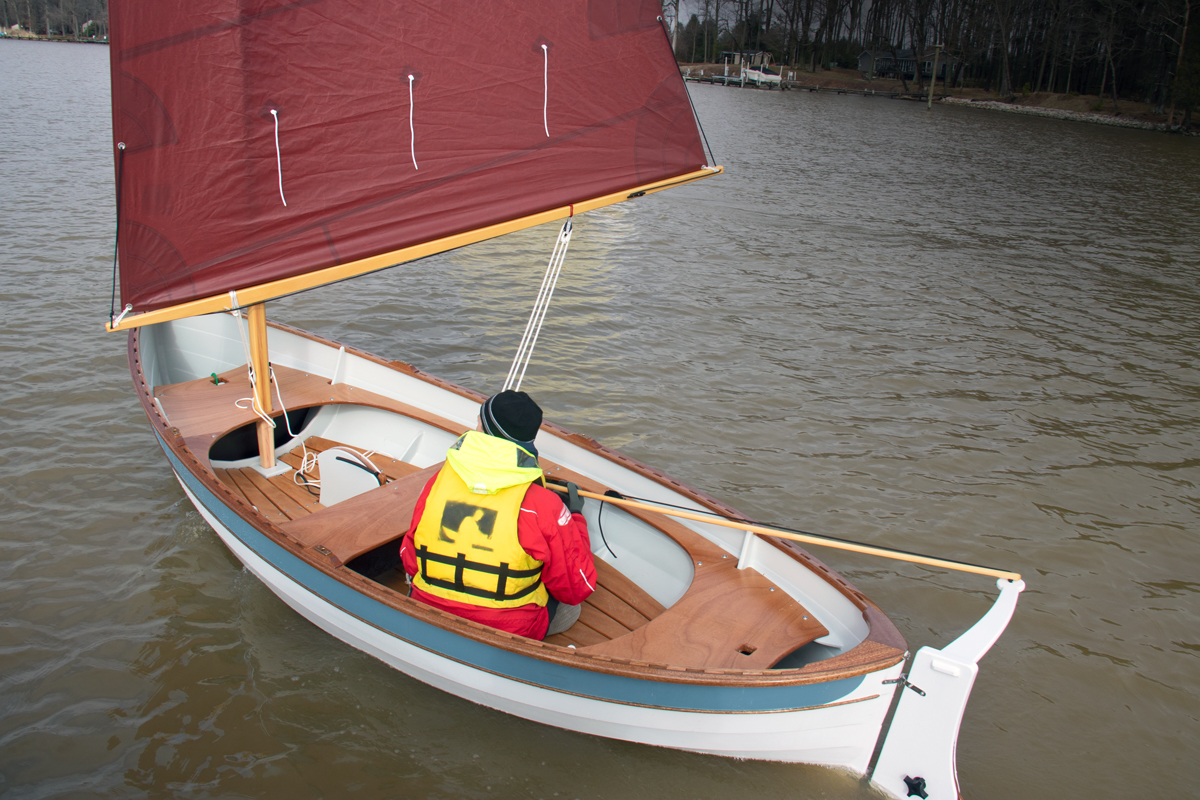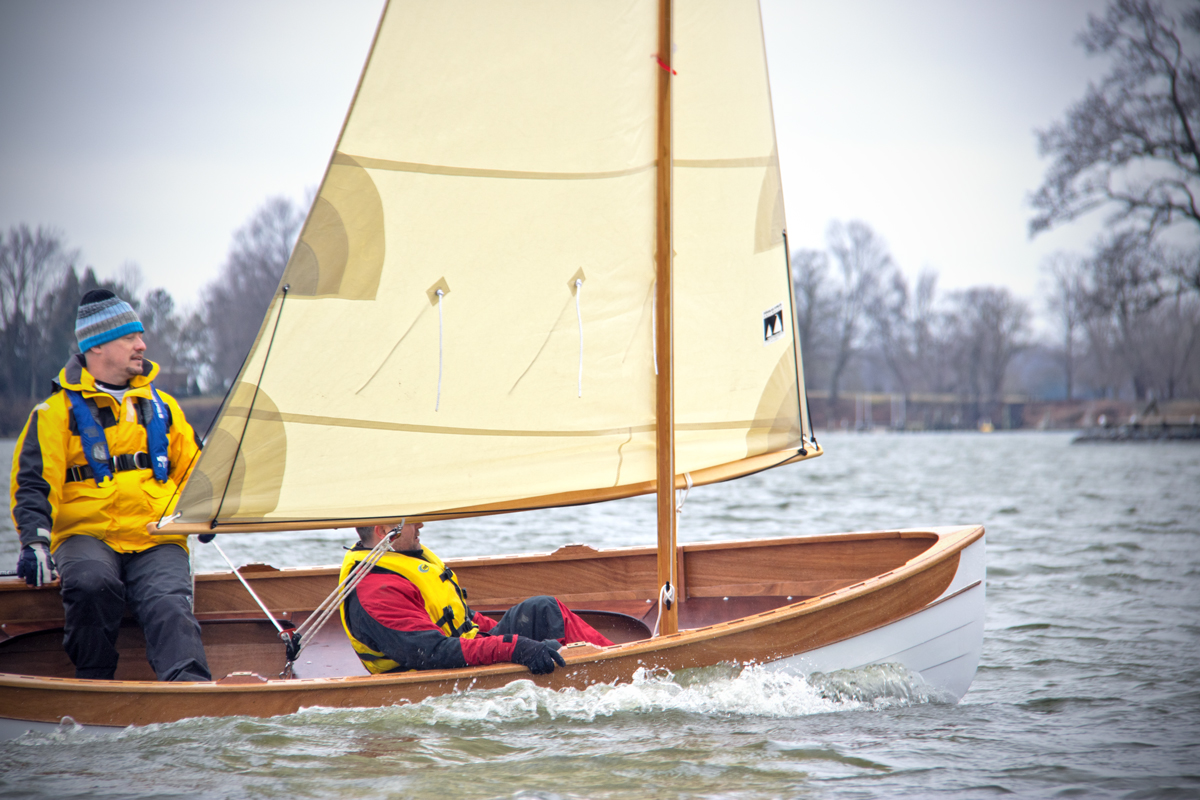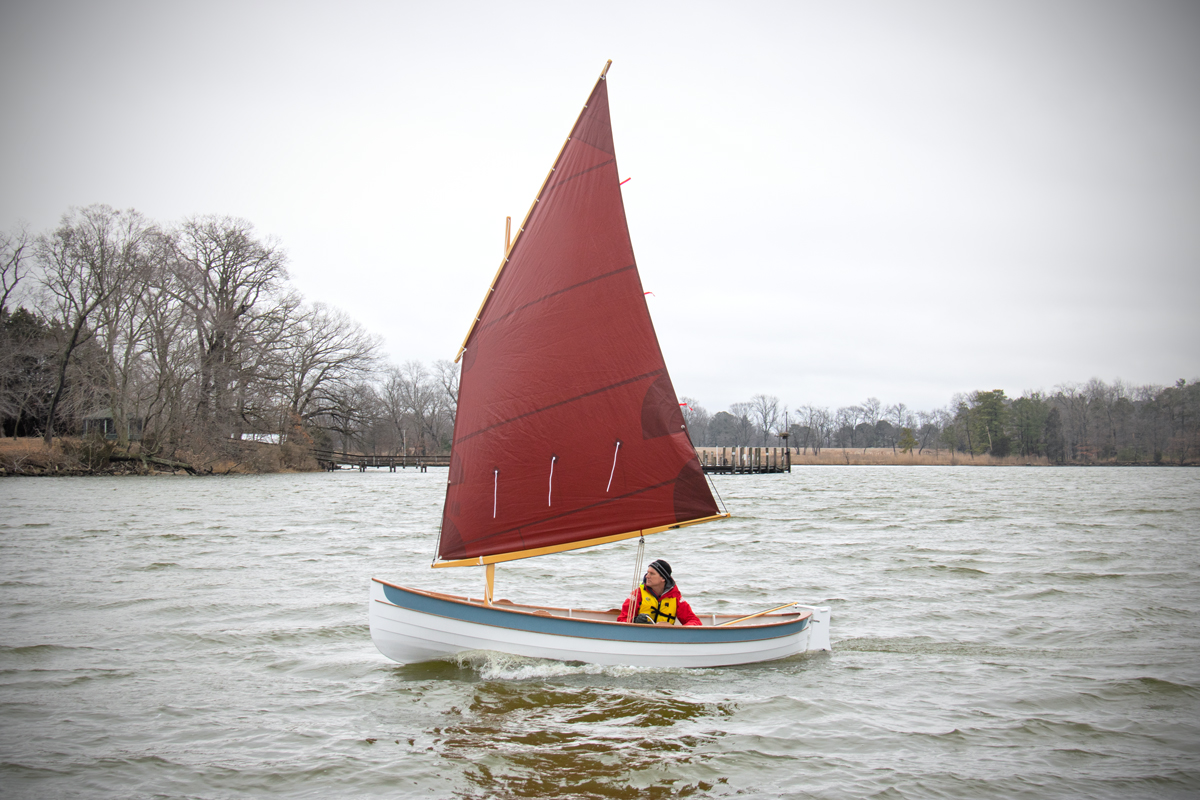Builders' Forum |
|
| ↓ Scroll to Last Comment ↓ | Forum Guidelines | Builders' Forum | |
Lighthouse Tender Peapod related questions
Greetings,
I have two questions for former & potential Lighthouse Tender Peapod builders as well as anyone who can give some feedback:
1. I have glassed the hull, applying three layers of 200 gr/m2 glass two coats inside, and one coat outside as requested by the build manual. Nevertheless, I'm still afraid 4 mm thick plywood will not be protected against unplanned beachings especially when the boat is loaded and can not be lifted properly to prevent rubbing against rocks and gravel. Is it a good idea to add a thin strip of hardwood 25 mm x 30 mm (height x width) to the keel (these battens may continue along the centerboard cavity as two parallel strips) and two other thin battens glued/filleted along the sides of the bilge, where this area is also subject to abrasion? Other than weight, can these surfaces cause more drag?
2. The centerboard seemed quite light to me. Is it a good idea to cut a properly shaped "pocket" at the lower part of it and add lead to increase the weight? This may increase the weight by at least 3 kgs and provide additional stability. Is it worth it? I may also build it from mahogany to increase the weight if this would also help.
Regards,
Powderpark
6 replies:
RE: Lighthouse Tender Peapod related questions
I too wondered about the risk of wear and tear on the beach. I opted simply to run extra glass tape the whole length of the keel and once the skeg was fitted encapsulated that in glass cloth as well - both for wear resistance and structural reinforcement.
Sailing the boat - sometime in some quite gusty weather - I have not found stability to be a problem. My impression is that there is quite a lot of righting moment from the hull shape when it is heeled. When the gust hits, the boat heels then reaches a comfortable equilibrium. When necessary a bit of body weight on the gunwale works wonders. I have yet to feel overpowered in a breeze. I don't think that 3kg in the centreboard (which is relatively short) would add much righting moment compared to my 75kgs on the rail.
Paul
RE: Lighthouse Tender Peapod related questions
Thanks for your quick and convincing replies Laszlo, Paul. I will go with the glass reinforcements and forget about centerboard modifications.
I had two questions in mind but when I tried to understand the builders' manual, describing the hole locations & orientations in the mast, yard, and boom, I was confused.
My understanding is as follows for the hole locations & orientations:
1. I have to drill a ⌀ 12 mm hole, 25 mm far from the tip of the mast
2. For yard and boom, the manual says to drill ⌀ 8 mm holes at both ends (their centers again being 25 mm far from the tips). The holes must be on the 38 mm wide faces.
3 For the yard, a ⌀ 8 mm hole must be drilled at 1168 mm far from the edge and this is all.
Is my understanding correct? Is there another diagram other than the builders' manual that I can refer to for sail rigging? this kind of sail plan is not common, so I need more clarity.
Regards
Powderpark

RE: Lighthouse Tender Peapod related questions
Based on your questions, I'm assuming that you are using the balanced lug rig. Here's a picture from the CLC Peapod picture gallery (available on the Peapod page) showing how the boom is rigged. (click on all the pictures to enlarge them).

Question #2 - You can see the holes in the booms here. The clew (back bottom corner of the sail) and tack (front lower corner of the sail) are lashed to the boom with the white line. It's a loose-footed sail so those are the only places where it's attached to the boom. The black lines and cleat are part of the jiffy reefing system.

Here you can see the full jiffy reefing system. The vertical line cleated on the mast is the halyard. It goes up the mast to the hole at the top of the mast (your question #1), through the hole and attaches to the hole in the yard (your question #3). This line is used to haul the yard (hal-yard) up to the top of the mast.

This image shows the yard attachments. The peak (top back corner of the sail) is lashed through the hole in the back of the yard while the throat (top front corner) is lashed through the hold in the front of the yard. Unlike the foot, the head is attached to its spar (the yard), but there ar no holes in the yard for this. It uses lashings around the yard.
So your understanding is correct about the size and placement of the holes. I hope the pictures help with your understanding of how they're used.
Laszlo
RE: Lighthouse Tender Peapod related questions
If you're going for extra protection for the bottom, I've read that Dynel cloth might be better than glass for abrasion resistance. I'm starting to wish we'd done that on our Passagemaker. Some of the folks here are fond of a graphite epoxy layer on the bottom, too, another thing I'm starting to wish we'd done.
Just a couple of thought maybe not worth two cents, never mind two bits. <;-)
.....Michael













RE: Lighthouse Tender Peapod related questions
» Submitted by Laszlo - Tue, 3/12/24 » 3:49 PM
1. If it was my boat I would stick with the fiberglass. It's easier to repair than a rubrail. If I was really nervous, I would double the glass on the bottom. An extra layer of glass is hydrodynamically smoother and will have less resistance than even a streamlined piece of wood. It's also neutrally buoyant. On my larger boats I always use 6 oz glass (which if I did the math correctly is the same as your 200 gram glass) and only once in 20+ years has anything gotten through the glass (it was the sharp edge of an aluminum angle bracket).
2. The centerboard is not meant to provide stability. That comes from the hull shape and that is very stable (I've rowed and sailed the prototype Peapods). Therefore increasing the weight of the centerboard is not necessary.
What the centerboard does is prevent leeward motion while sailing and it does this just fine with the designed weight.
You can see in this picture, where there's almost no wind and the full sailrig is up, that the hull shape and weight give enough stability to safely stand up.
Laszlo